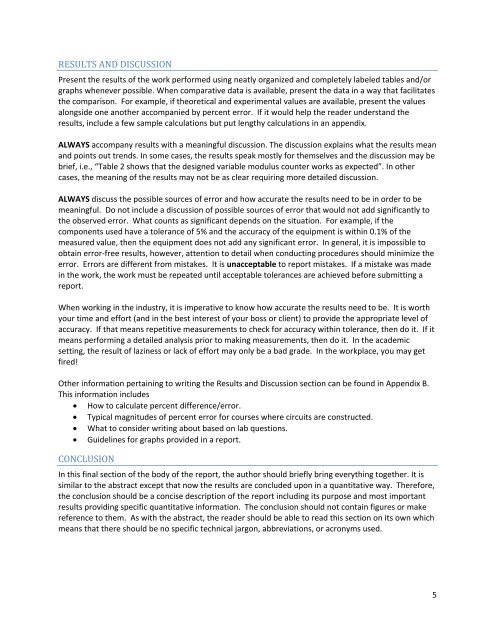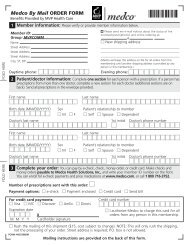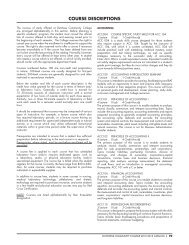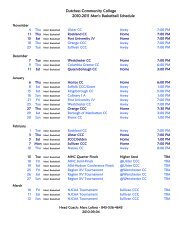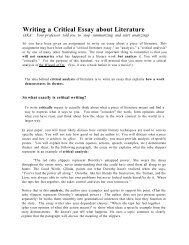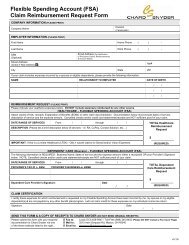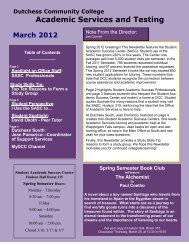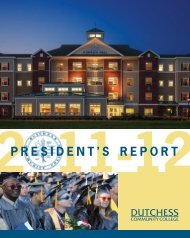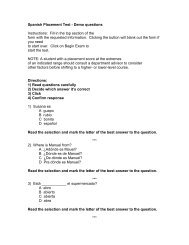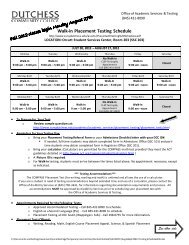TECHNICAL REPORT WRITING GUIDELINES
TECHNICAL REPORT WRITING GUIDELINES
TECHNICAL REPORT WRITING GUIDELINES
You also want an ePaper? Increase the reach of your titles
YUMPU automatically turns print PDFs into web optimized ePapers that Google loves.
RESULTS AND DISCUSSIONPresent the results of the work performed using neatly organized and completely labeled tables and/orgraphs whenever possible. When comparative data is available, present the data in a way that facilitatesthe comparison. For example, if theoretical and experimental values are available, present the valuesalongside one another accompanied by percent error. If it would help the reader understand theresults, include a few sample calculations but put lengthy calculations in an appendix.ALWAYS accompany results with a meaningful discussion. The discussion explains what the results meanand points out trends. In some cases, the results speak mostly for themselves and the discussion may bebrief, i.e., “Table 2 shows that the designed variable modulus counter works as expected”. In othercases, the meaning of the results may not be as clear requiring more detailed discussion.ALWAYS discuss the possible sources of error and how accurate the results need to be in order to bemeaningful. Do not include a discussion of possible sources of error that would not add significantly tothe observed error. What counts as significant depends on the situation. For example, if thecomponents used have a tolerance of 5% and the accuracy of the equipment is within 0.1% of themeasured value, then the equipment does not add any significant error. In general, it is impossible toobtain error‐free results, however, attention to detail when conducting procedures should minimize theerror. Errors are different from mistakes. It is unacceptable to report mistakes. If a mistake was madein the work, the work must be repeated until acceptable tolerances are achieved before submitting areport.When working in the industry, it is imperative to know how accurate the results need to be. It is worthyour time and effort (and in the best interest of your boss or client) to provide the appropriate level ofaccuracy. If that means repetitive measurements to check for accuracy within tolerance, then do it. If itmeans performing a detailed analysis prior to making measurements, then do it. In the academicsetting, the result of laziness or lack of effort may only be a bad grade. In the workplace, you may getfired!Other information pertaining to writing the Results and Discussion section can be found in Appendix B.This information includes• How to calculate percent difference/error.• Typical magnitudes of percent error for courses where circuits are constructed.• What to consider writing about based on lab questions.• Guidelines for graphs provided in a report.CONCLUSIONIn this final section of the body of the report, the author should briefly bring everything together. It issimilar to the abstract except that now the results are concluded upon in a quantitative way. Therefore,the conclusion should be a concise description of the report including its purpose and most importantresults providing specific quantitative information. The conclusion should not contain figures or makereference to them. As with the abstract, the reader should be able to read this section on its own whichmeans that there should be no specific technical jargon, abbreviations, or acronyms used.5


